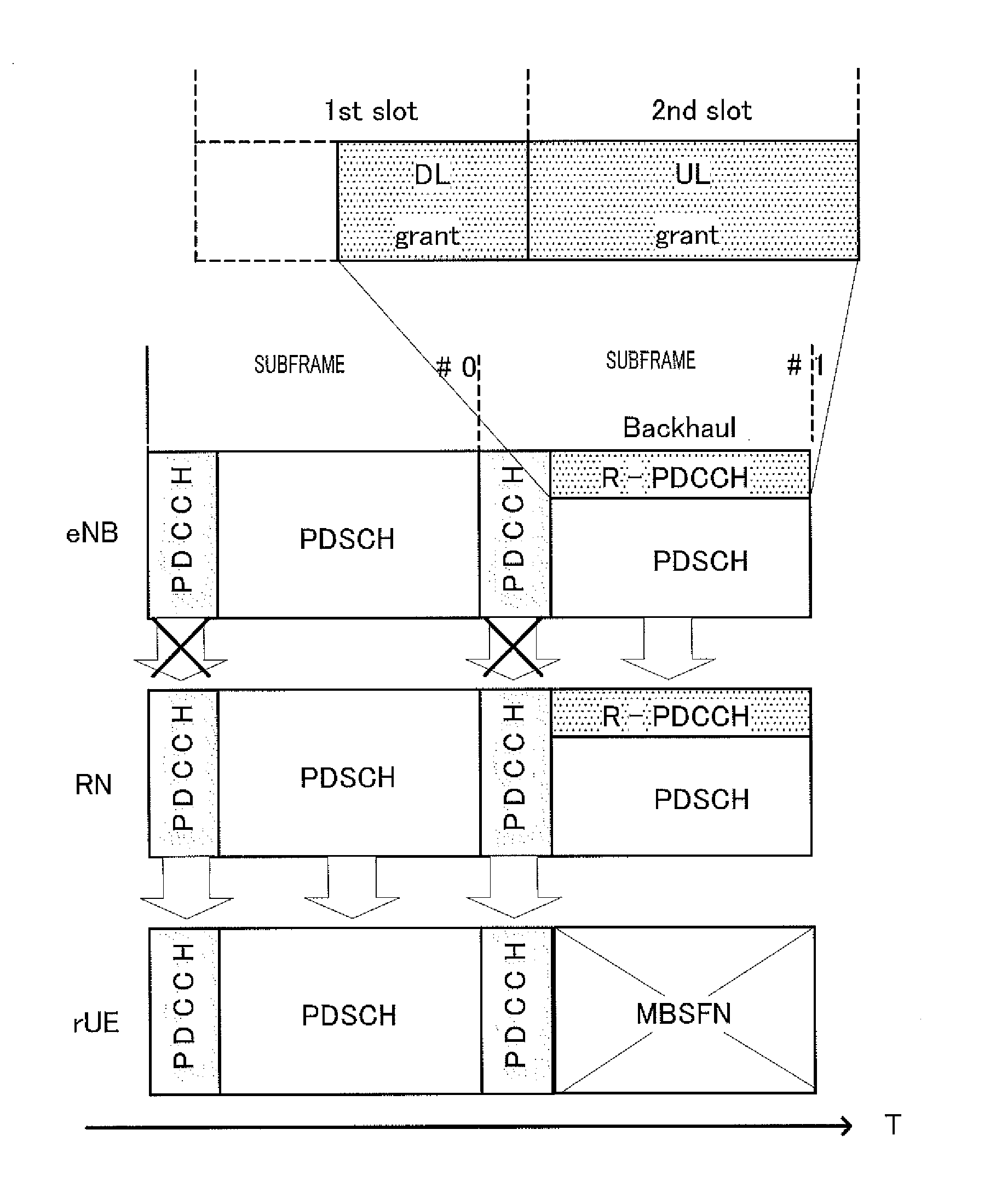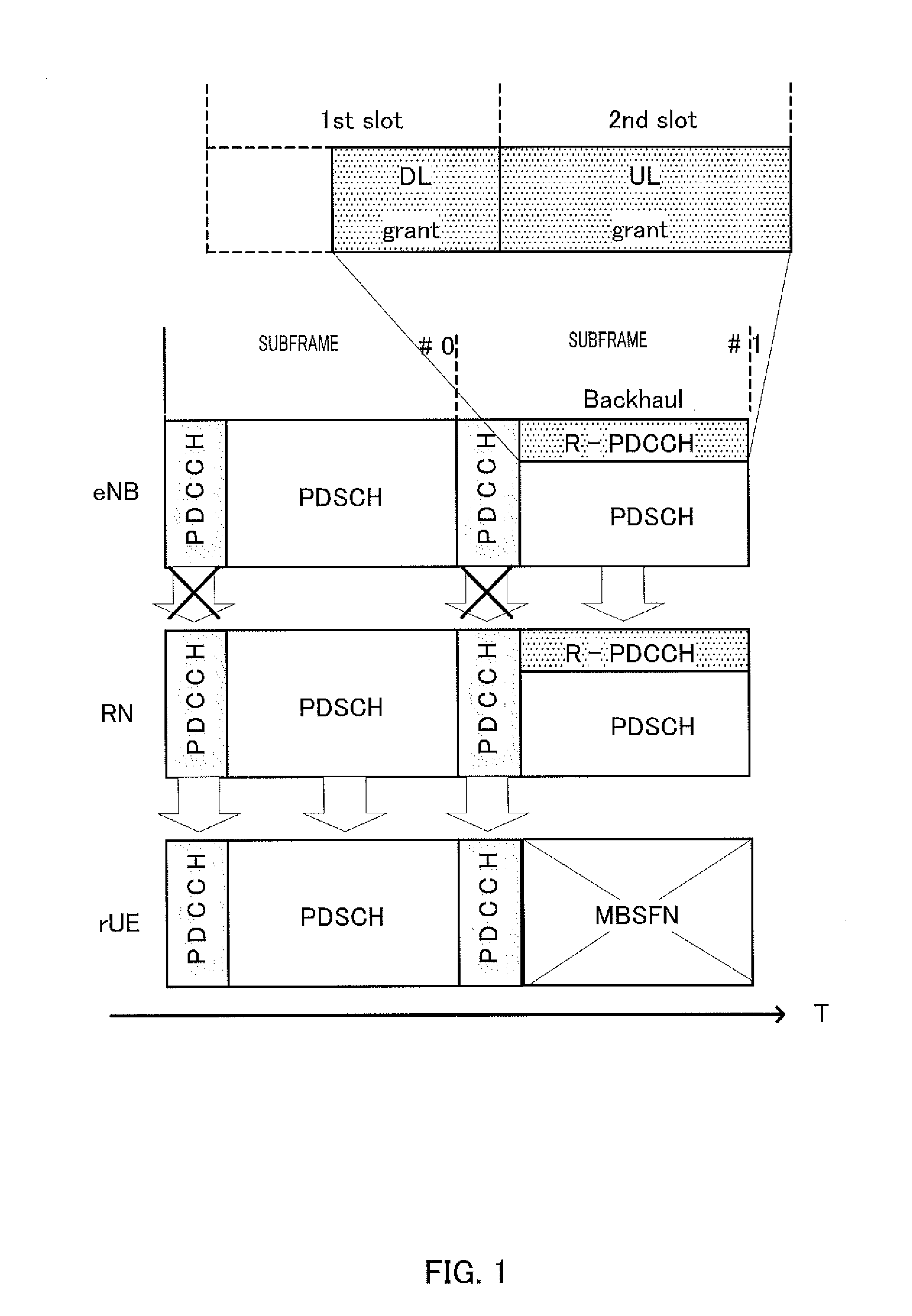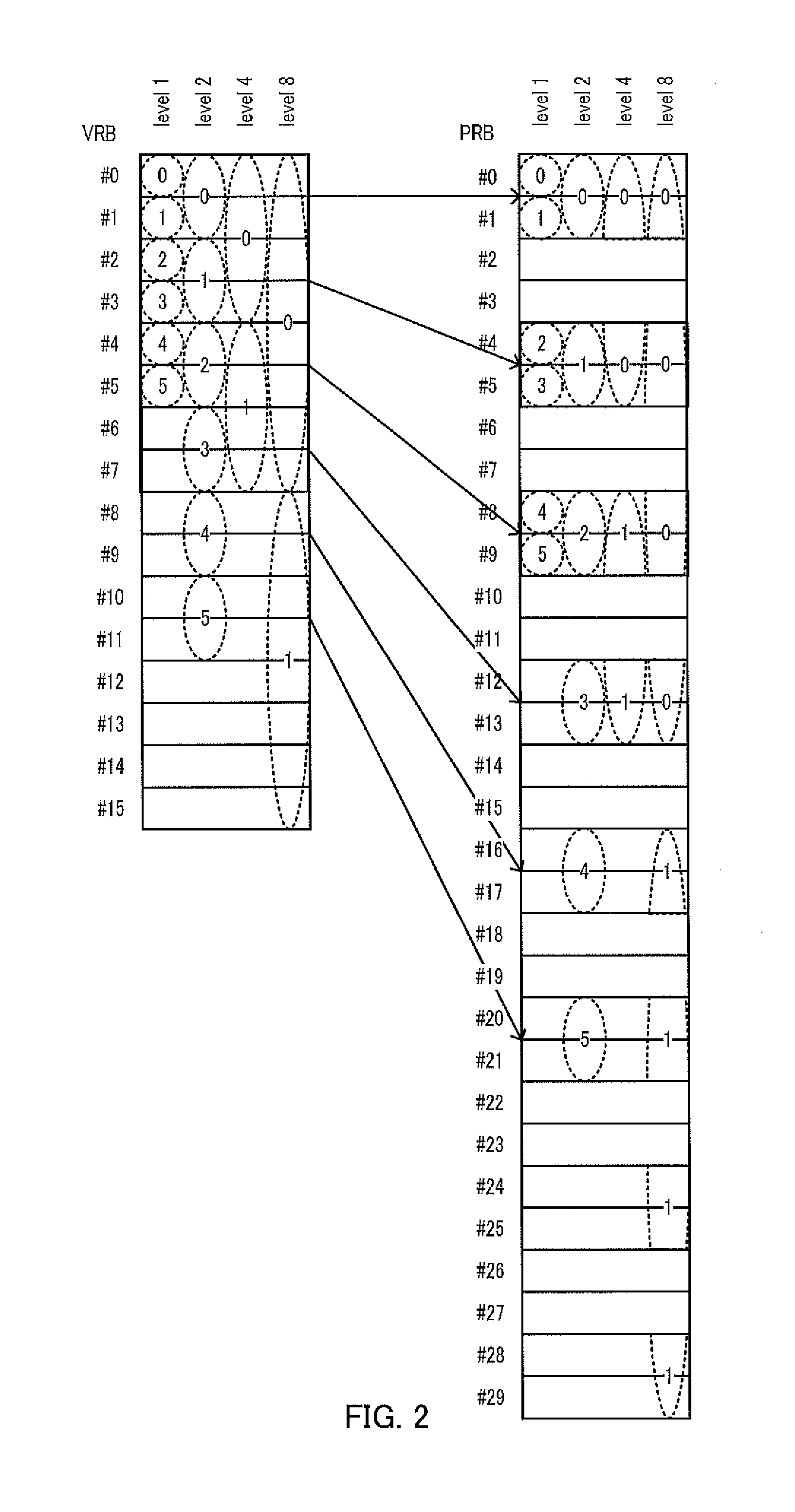Transmission device, receiving device, transmission method and receiving method
a technology of receiving device and transmission device, which is applied in the direction of signal allocation, transmission path sub-channel allocation, wireless commuication services, etc., can solve the problems of limiting the increase in the number of base stations and the reasonable cost of installation of base stations
- Summary
- Abstract
- Description
- Claims
- Application Information
AI Technical Summary
Benefits of technology
Problems solved by technology
Method used
Image
Examples
embodiment 1
[0059](Overview of Communication System)
[0060]A communication system according to Embodiment 1 of the claimed invention includes a transmission apparatus and a reception apparatus. Specifically, in this embodiment of the claimed invention, a description will be provided while the transmission apparatus is referred to as base station 100, and the reception apparatus is referred to as terminal 200. The communication system is an LTE-A system, for example. Base station 100 is an LTE-A base station, and terminal 200 is an LTE-A terminal, for example.
[0061]FIG. 5 illustrates a main configuration of base station 100 according to Embodiment 1 of the claimed invention. Base station 100 transmits control signals for terminal 200 after mapping the control signals to a first resource region usable for a control channel or a data channel (R-PDCCH for a terminal, in this case) or in a second resource region usable for a control channel (a PDCCH, in this case). Base station 100 distributes a seri...
embodiment 2
[0116]Embodiment 2 relates to a variation of the mapping resource pattern corresponding to SPS.
[0117]Specifically, mapping resource pattern 2 according to Embodiment 2 has the following configuration:
[0118](1) mapping resource pattern 2 includes N transmission-scheduled subframes (where N is a natural number greater than or equal to two);
[0119](2) in the first transmission-scheduled subframe of mapping resource pattern 2, region (a), which is described above, is to be a mapping resource for DL grant, but regions (b) and (c) are not to be data resource; and
[0120](3) all regions (a), (b), and (c) are to be data resources in the second and subsequent transmission-scheduled subframes of mapping resource pattern 2.
[0121]Such mapping resource pattern 2 allows reception of data in the second and subsequent transmission-scheduled subframes to be uniform in size, which makes it easier for base station 100 to take the number of resources into consideration for determining an error rate.
embodiment 3
[0122]Embodiment 3 aims at the second object described above. The base station and the terminal according to Embodiment 3 are identical to base station 100 and terminal 200 according to Embodiment 1, respectively, so that a description will be provided with reference to FIGS. 7 and 9.
[0123]In base station 100 according to Embodiment 3, if there are any data signals to be transmitted, transmission controlling section 102 takes, as input, the scheduling identification information outputted from scheduling method determining section 101. Transmission controlling section 102 determines the “mapping resource pattern” of the control signals and the data signals based on the scheduling identification information and outputs the determined information on the mapping resource pattern to signal scheduling section 106.
[0124]The “mapping resource pattern” for the scheduling identification information indicating SPS has the following configuration in particular:
[0125](1) mapping resource pattern...
PUM
 Login to View More
Login to View More Abstract
Description
Claims
Application Information
 Login to View More
Login to View More - R&D
- Intellectual Property
- Life Sciences
- Materials
- Tech Scout
- Unparalleled Data Quality
- Higher Quality Content
- 60% Fewer Hallucinations
Browse by: Latest US Patents, China's latest patents, Technical Efficacy Thesaurus, Application Domain, Technology Topic, Popular Technical Reports.
© 2025 PatSnap. All rights reserved.Legal|Privacy policy|Modern Slavery Act Transparency Statement|Sitemap|About US| Contact US: help@patsnap.com



